Asus RP-AX58 review | Tom’s Guide
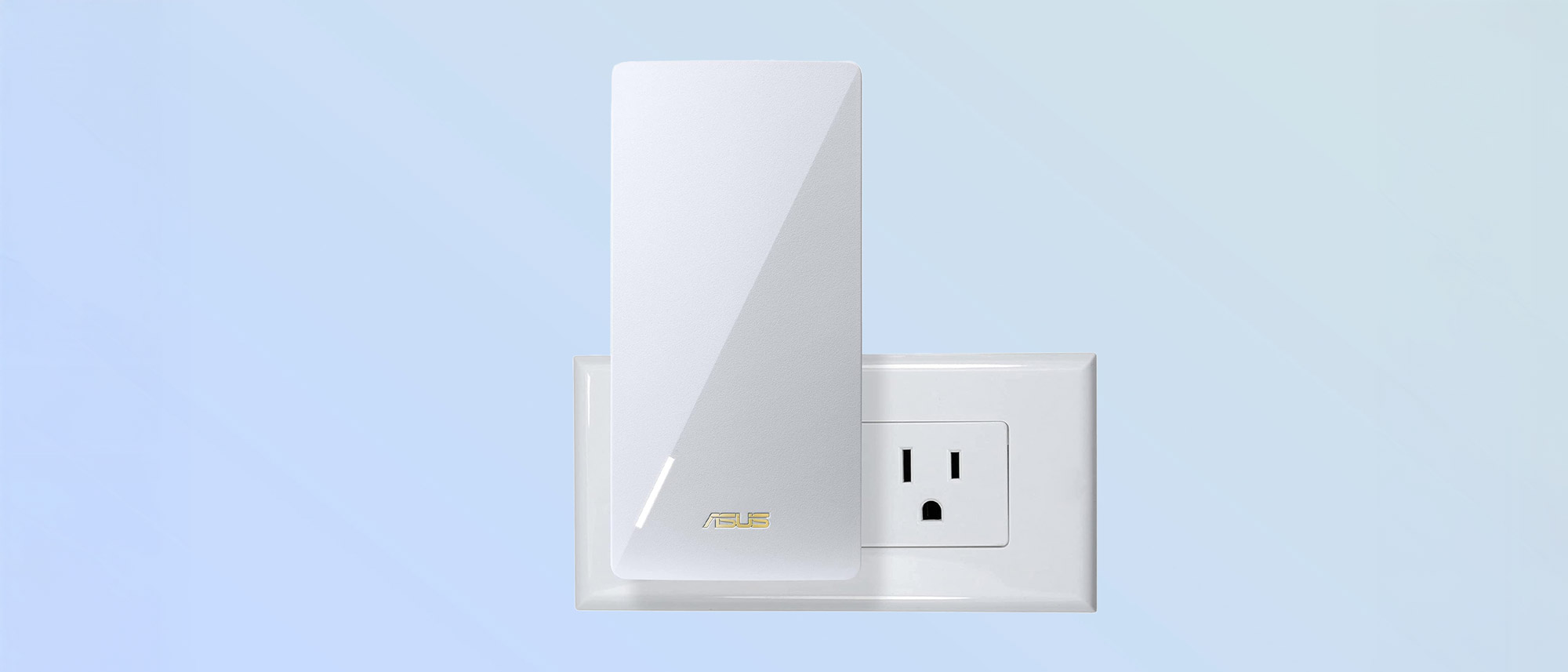
Asus RP-AX58 review: Specs
Wi-Fi Spec: AX3000
Number of Antennas/Removable: 2/No
Ports: 1 Gbps LAN
Peak 802.11ax performance: 490.2 Mbps (10 feet from extender)
Range: 115 feet
Size: 5.9 x 2.8 x 2.2 inches
Estimated Annual Electricity Cost: $7.40
Although it’s stuck in the Wi-Fi 6 era of home networking, the Asus RP-AX58 makes the most of the networking spec and comes close to the performance of a Wi-Fi 7 extender. However, it lacks the ability to use the 6GHz networking band, has a gigabit Ethernet port and does without a USB connector for a data drive. Still, it’s one of the most economical ways to push a data signal into new areas of a home.
My Asus RP-AX58 review will help you decide if this is the best Wi-Fi extender for your home or if you’d be better off with something more powerful or perhaps even upgrading to one of the best mesh Wi-Fi systems instead.
Asus RP-AX58 review: Pricing and availability
The Asus RP-AX58 extender sells for $80 in a variety of stores, making it slightly more expensive than the Linskys RE7350 ($70) but a bargain compared to the Netgear Nighthawk EAX17 ($130) or the TP-Link RE655BE ($230).
It’s been designed to extend a wireless network by upwards of 2,200 square feet.
Asus RP-AX58 review: Design
Clothed in a matte white finish, the Asus RP-AX58 extender measures 5.9 x 2.8 x 2.2 inches, making it one of the largest extenders on the market. Its two prong plug means it will work in older houses that lack grounded outlets and its back is covered with vents to keep it cool. The extender can accommodate an adjacent plug and stand on its own if used with an extension cord.
The RP-AX58’s front has a raised diagonal peak that runs from corner to corner with an angled LED bar at the bottom. When it glows white, the extender is working fine, but red indicates no active signal.
Like the others, there isn’t an on/off switch, but its WPS (Wi-Fi Protected Setup) key lets you quickly add it to a network. There’s also a recessed reset button for starting the setup procedure over again. It works with Asus’s AiMesh networking as an additional node, as a generic extender or as either an access point or a media bridge.
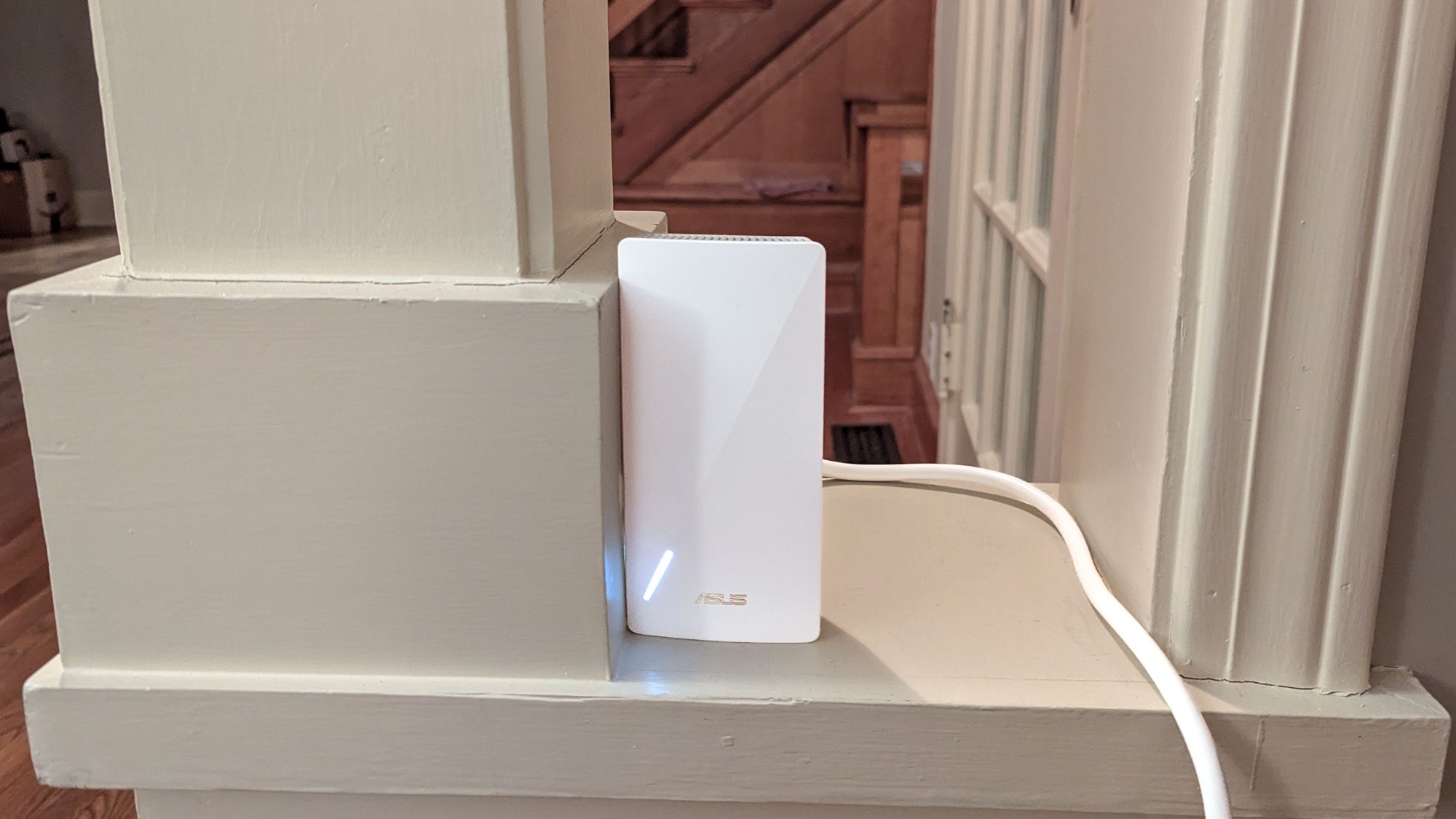
That said, the RP-AX58 lacks a USB port for adding a data drive. Its gigabit per second wired Ethernet connection is second best compared to the RE655BE’s 2.5 Gbps port, though.
Asus RP-AX58 review: Performance
In a series of real world tests at my 3,500 square foot home using the Keysight IxChariot networking benchmark configured to simulate 10 data-hungry users, the RP-AX58 did an outstanding job of filling in Wi-Fi dead zones. Using a Netgear Nighthawk RS600 router and the extender set up 40 feet away, it was able to wring more data out of thin air than other Wi-Fi 6 competitors.
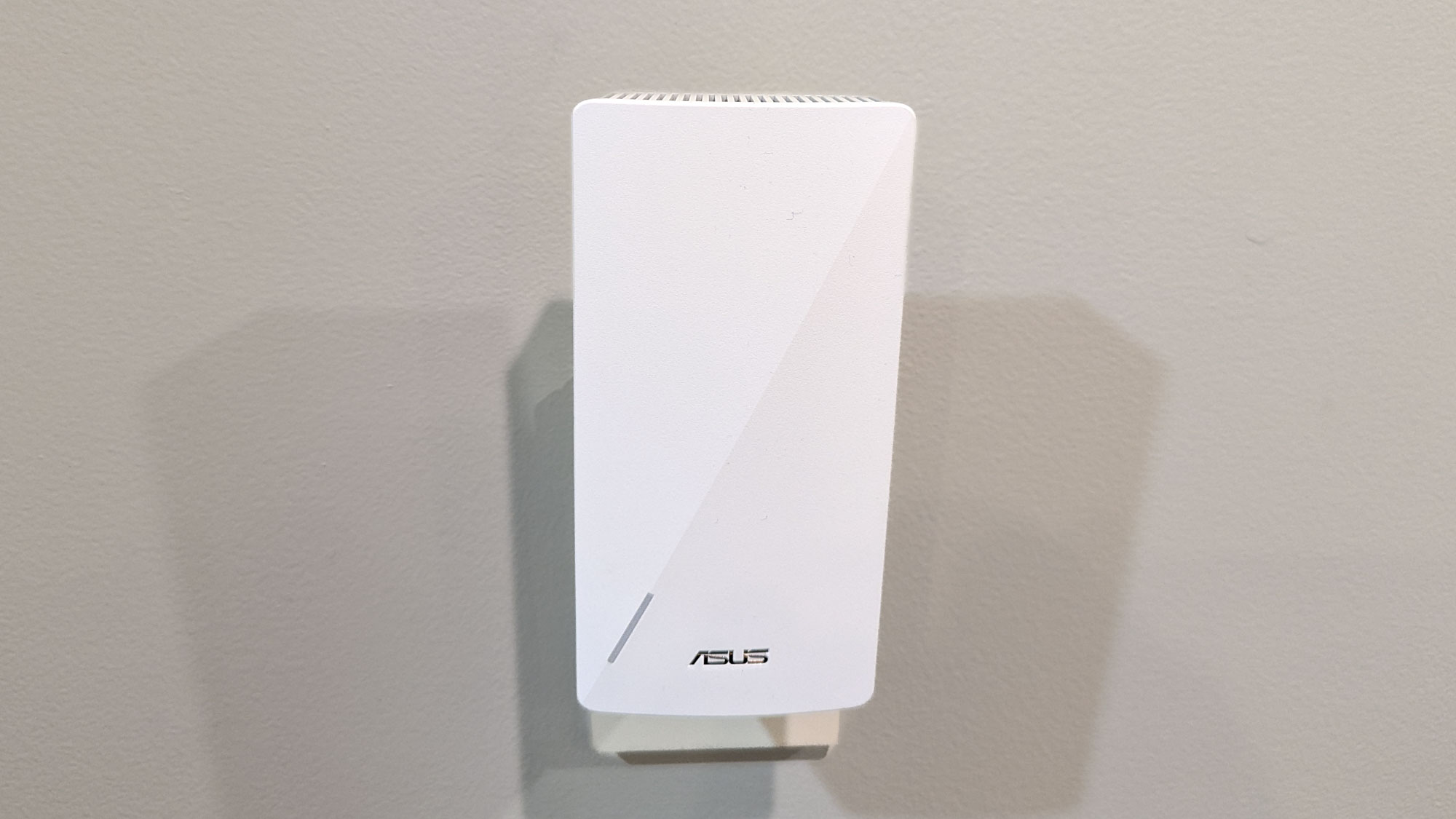
With the extender and Acer Swift Edge 16 test system next to each other, the extender’s throughput hit 449.6 Mbps, about 50% off the pace set by the Wi-Fi 7-powered RE655BE’s 663.5 Mbps. With 10 feet between the extender and test system, the throughput rose to 490.2 Mbps, well off the RE-655BE’s 719.5 Mbps, but well ahead of the other Wi-Fi 6 extenders, like the RE7350’s 203.7 Mbps or the EAX17’s 383.1 Mbps.
At 40 feet, the extender pushed 201.1 Mbps of data to the test system. This is on a par with the EAX17’s 197.9 Mbps but well behind the RE655BE’s class leading 376.7 Mbps. Its 115 foot range was the longest I’ve seen for an extender and perfect for those with larger homes.
| Row 0 – Cell 0 |
Asus RP-AX58 |
Linksys RE7350 |
Netgear EAX17 |
TP-Link RE655BE |
|
10 feet |
490.2 Mbps |
203.7 Mbps |
383.1 Mbps |
719.5 Mbps |
|
40 feet |
201.1 Mbps |
80.6 Mbps |
197.9 Mbps |
376.7 Mbps |
Over the course of two weeks, I used the RP-AX58 daily to move emails, transfer data and watch 4K videos. Its passive cooling kept the extender’s temperature below 98 degrees. Its 5.3 watt power consumption was middle of the pack. If it runs all day and night, the RP-AX58 should add about $7.40 to your annual power bills if you pay the national average of 16 cents per kilowatt hour.
Asus RP-AX58 review: Features
Based on the Wi-Fi 6 standard, the RP-AX58 can work with data traveling on the 2.4 and 5.0GHz bands but can’t tap into the higher-performing 6GHz band. It uses 2×2 streaming with the data traveling through two internal antennas; neither are aimable.
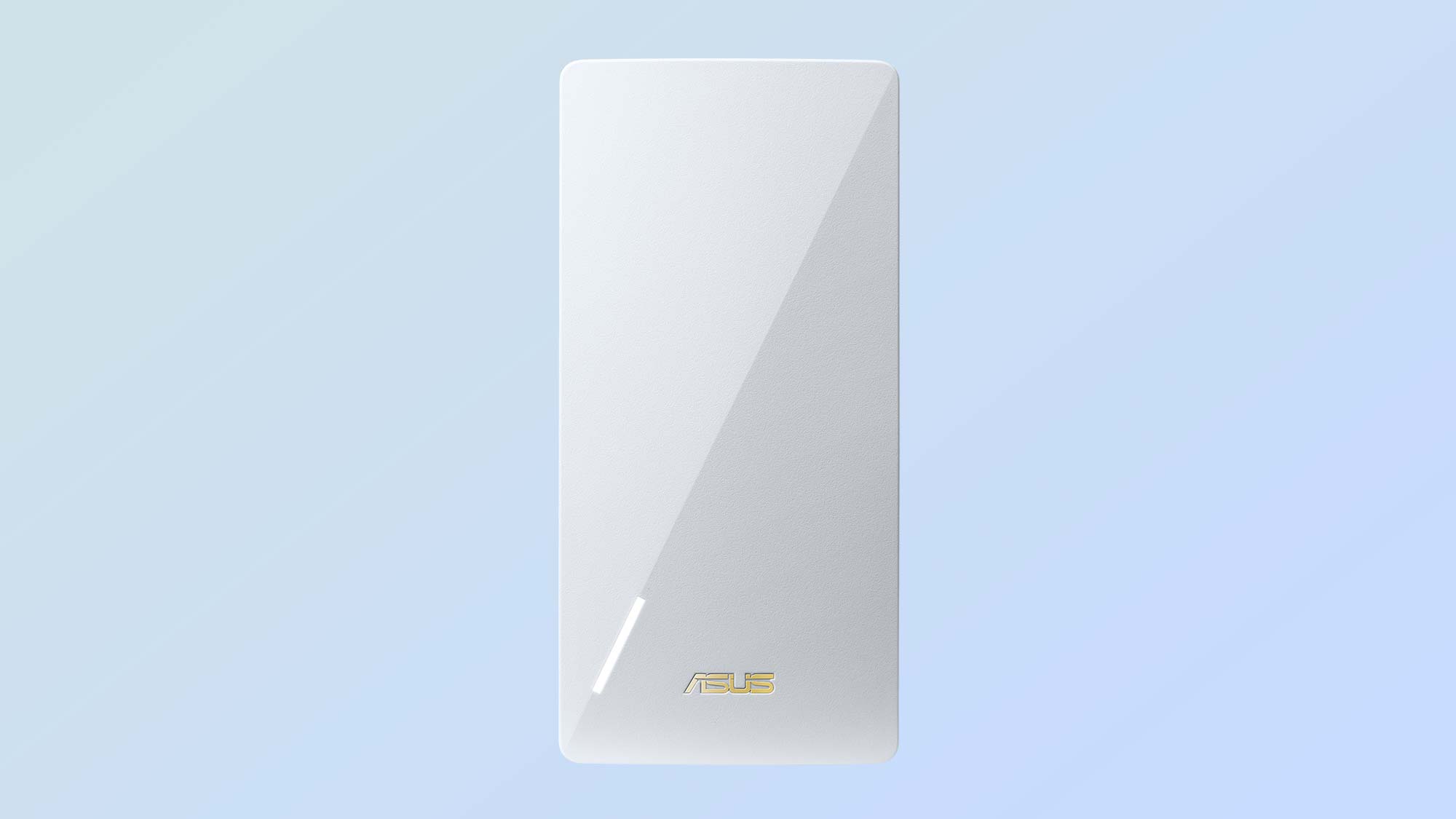
It taps into all the 802.11AX protocols, from beamforming and MU-MIMO to 1024 Quadrature Amplitude Modulation (QAM) but can’t use 320MHz data channels. Over the 2.4- and 5.0-GHz bands, it can move 574 Mbps and 2.402 Gbps for a rated 3 Gbps theoretical peak output.
Asus RP-AX58 review: Setup and software
Asus gives the option of using the WPS quick connect protocol to link the extender with a router, using a connected browser to tap into the device’s internal interface or the company’s Extender app which is available for iOS and Android. I chose the latter and got the Wi-Fi ball rolling by tapping on “Set up Extender” after it connected.

Next up, I picked the extender. Be careful, there are likely to be two nearly identical listings; I chose the one that included “(Connected)”.
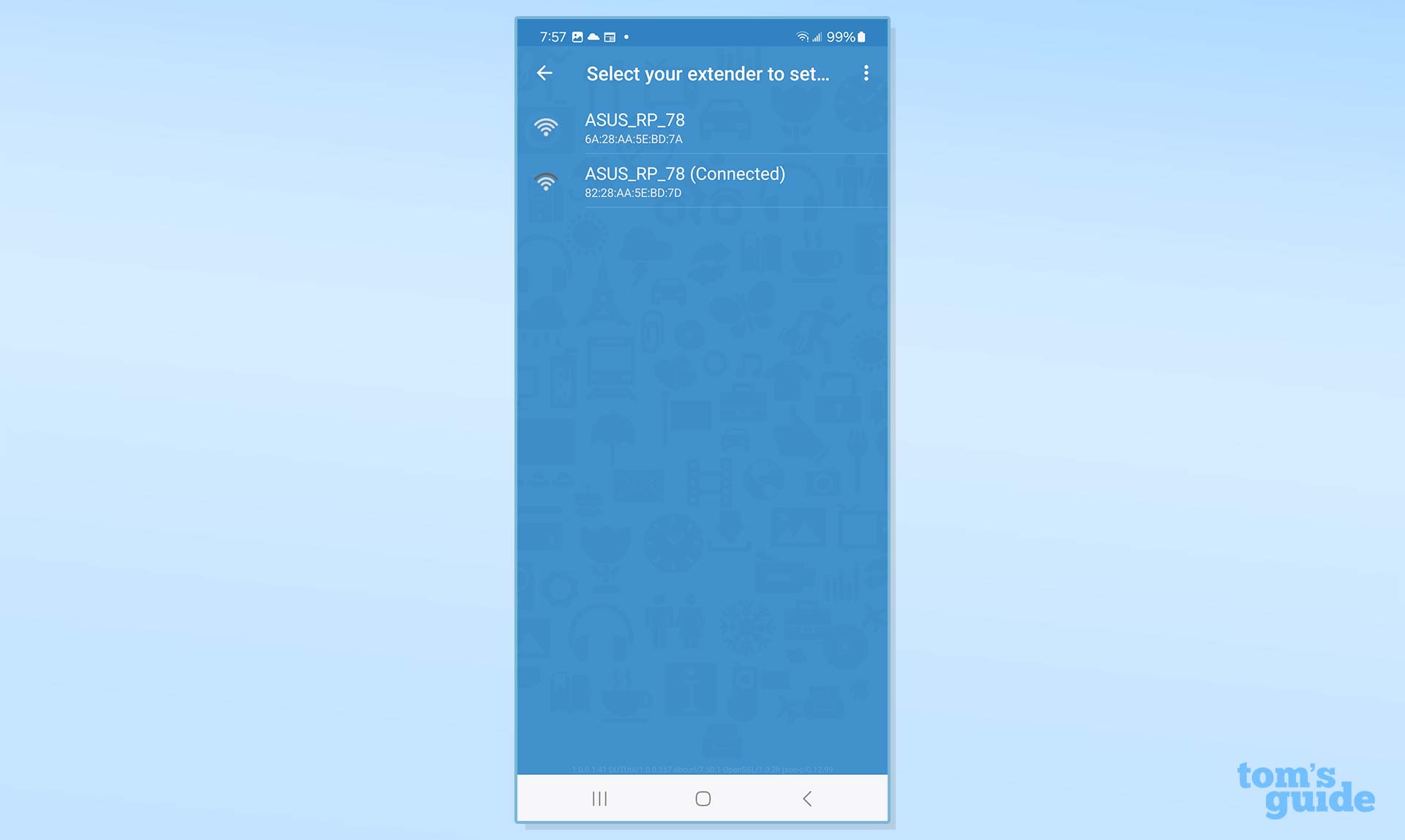
While the interface said that I needed to wait a few seconds, it took nearly two minutes to connect to the extender and get the installation going. I needed to name the room it would live in and pick the LAN to be extended. I added the network’s passcode.
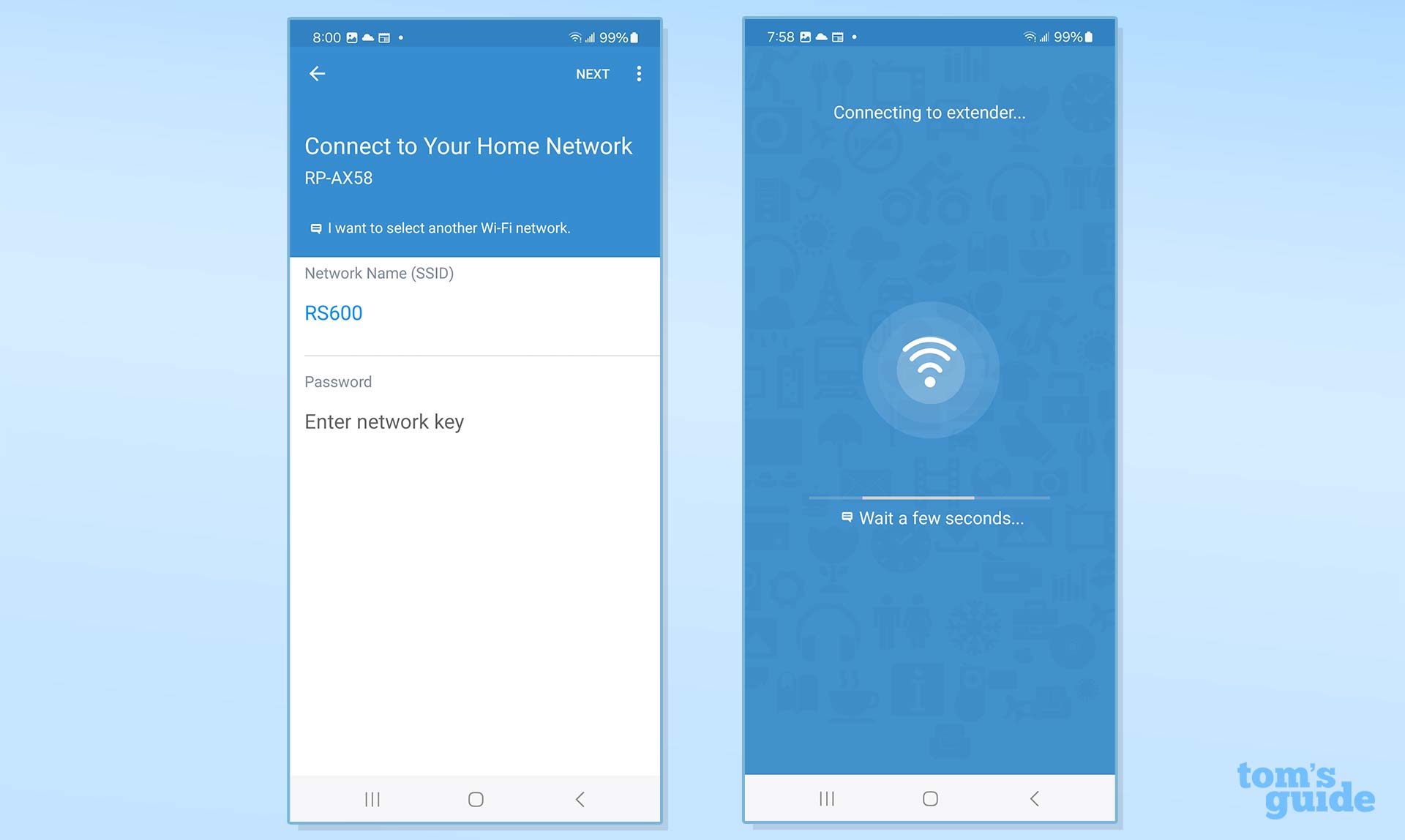
To simplify roaming, I used the same name and passcode. Then, I finished up by adding an administrative password. After a firmware upgrade, it connected on the first attempt. Start to finish, it took 6 minutes and 20 seconds.
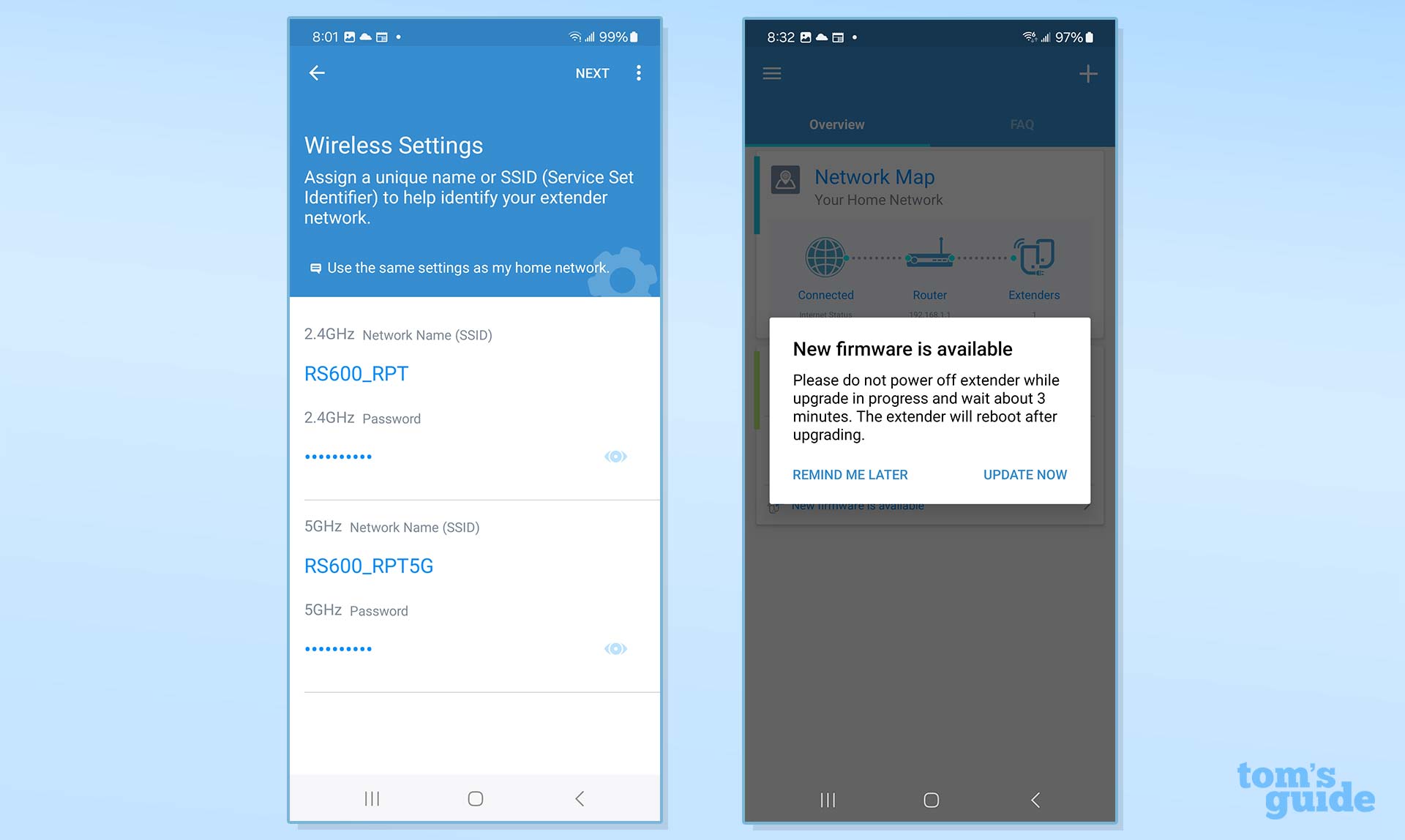
The app’s main screen shows the network topology, the extender’s IP address and its names. The “+” sign is for adding another extender. There’s something that’s rare for a networking app: a handy FAQ section up top should you have trouble.
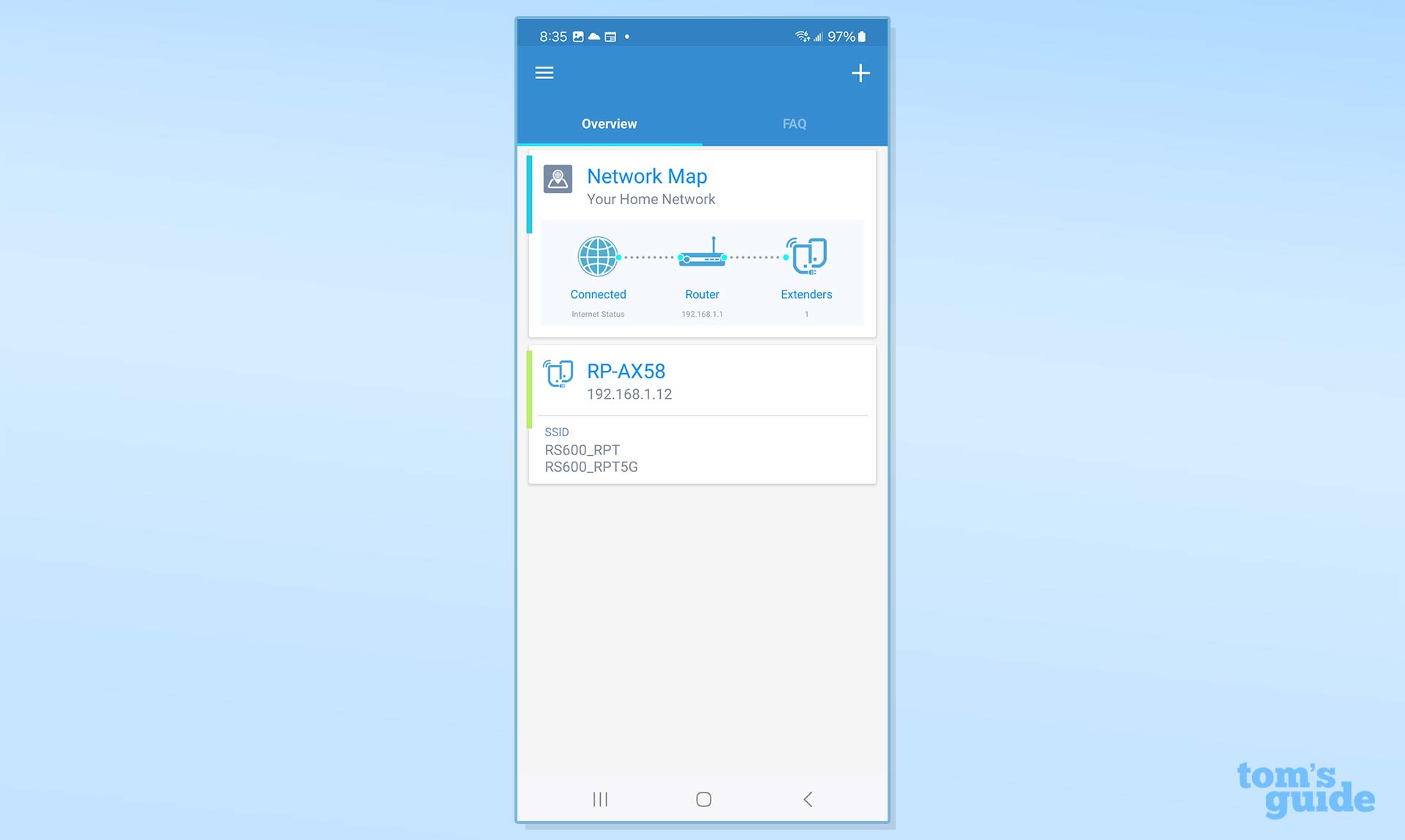
The three line hamburger link in the upper left is for everything else with tips for placement and starting up.

That said, the Network Tool includes a nice Network Analyzer that shows all the local Wi-Fi networks and a Wi-Fi Signal page with a signal strength graph. There are Ping and Trace Route diagnostics but it’s missing basics like the ability to use the detailed networking data to adjust the extender’s settings or turn the LEDs off.

Asus RP-AX58 review: Warranty and support
Asus matches TP-Link with a two year warranty and unlimited support for the RP-AX58 extender. Others, like Linksys, cover their extenders for a year and Netgear only offers 90 days of support unless you pay extra.

In addition to the FAQ help on the app, the RP-AX58 support pages have a lot to offer, including places to get new firmware, help with setup and a deep list of FAQs. Some of the items are generic to the company’s extenders and there’s no manual available, only a quickstart sheet.
Asus RP-AX58 review: Verdict
It may not be the fastest extender on the planet, but Asus wrings the most performance out of the Wi-Fi 6 standard with its RP-AX58. It misses the ability to tap into Wi-Fi 7’s 6GHz data band and 4K QAM but the RP-AX58 is one of the fastest ways to extend a wireless network, particularly close up and will fit right into an Asus AiMesh network as an additional node.
While it lacks access to the top performing 6GHz band, getting the RP-AX58 could be the best $80 you can spend on a network if you don’t want to upgrade to a mesh Wi-Fi system.
Source link











